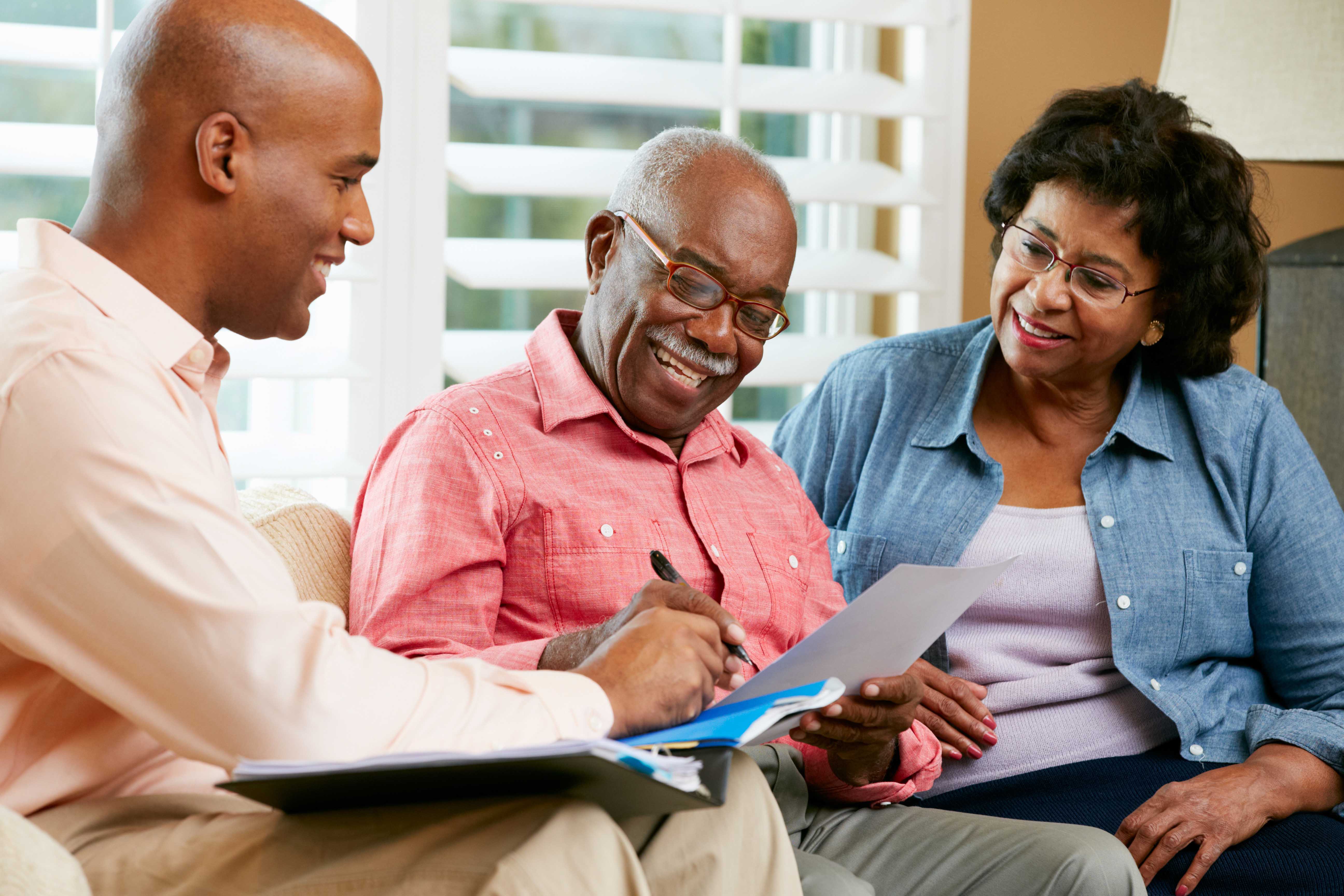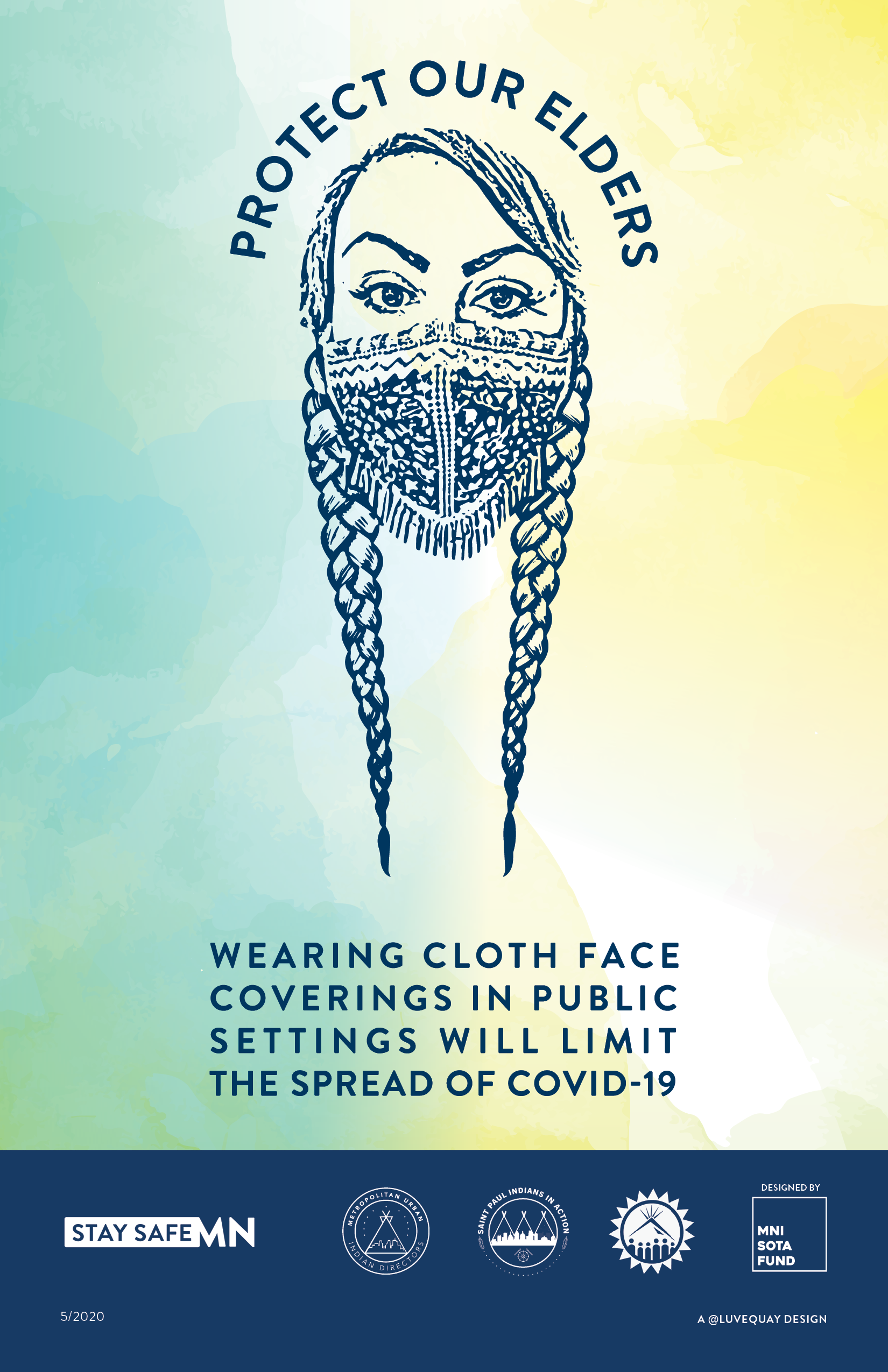Health Equity and COVID-19
Health equity means everyone has the same chance to be as healthy as possible. Minnesota on average is one of the healthiest states in the country. However, not everyone in Minnesota has the same chance to be healthy. Things that can get in the way of being healthy also play a part in the unequal way that COVID-19 is affecting some Minnesota communities.
Talking about health equity and COVID-19 is important
 Anyone can get COVID-19. However, older adults and people of any age with serious underlying medical conditions might be at higher risk for severe illness from COVID-19. Good health depends on everything that touches our lives: families; how and where we live, work, and go to school; and access to doctors and to clean water, air, and land. It also depends on having an equal voice about the things that touch our lives.
Anyone can get COVID-19. However, older adults and people of any age with serious underlying medical conditions might be at higher risk for severe illness from COVID-19. Good health depends on everything that touches our lives: families; how and where we live, work, and go to school; and access to doctors and to clean water, air, and land. It also depends on having an equal voice about the things that touch our lives.
The general health of Minnesotans of color and American Indians is very different from those who are white. General health is also very different in LGBTQ and other communities: people with disabilities; those who live in rural communities; and people who are unhoused or have unstable housing. Some Minnesotans are part of more than one of these communities.
All of these communities experience barriers to having the best health. This results in higher rates of chronic disease, injury, and violence. It is not individual choice that keeps these communities from being as healthy as possible. It is most often the result of unjust conditions in society and being underserved.
These unjust barriers to good health are long-standing and built into everyday life and the decisions people make. They can lead to economic instability, higher rates of chronic health conditions, and issues with mental health. These barriers also play a role in the higher impact of COVID-19 on Minnesota’s communities of color and American Indians.
- A higher share of American Indians and people of color, particularly immigrants and refugees, tend to hold jobs in manufacturing, the food industry, and similar businesses. These workplaces are settings where COVID-19 is more likely to spread unless the right steps are taken to stop it. Workers may have little choices to protect their health and still earn money.
- American Indians and people in communities of color are more likely to have diabetes, high blood pressure, and other underlying health conditions. These health conditions make it harder to handle and recover from COVID-19.
- For decades, the tobacco industry has targeted communities of color and people who are stressed and struggling. This can lead to addiction and lifelong health conditions that make people more likely to become sick with a long list of illnesses, including COVID-19. In Minnesota, American Indians, African Americans, members of the LGBTQ community, and people with lower incomes, less formal education, and mental illness are more likely to smoke cigarettes.
- Members of Minnesota’s Asian community are blamed by some for starting COVID-19, even though no one can be blamed. The stress and trauma of unfair blame directed at members of the Asian community and their businesses can harm mental well-being, an important part of health.
How MDH addresses inequities tied to COVID-19
Each Minnesota community has health barriers and needs that are specific to that community. Some barriers and needs are the same for all communities, such as affordable housing and health care. Other barriers are built into policies that give people fewer chances because of their race, physical and mental abilities, gender identity, or other factors.
The Minnesota Department of Health (MDH) works with communities to understand the barriers to good health that members face and the added barriers faced by people who are members of more than one community. MDH partners with communities in many ways to fight COVID-19:
- A work group was formed to develop ways to increase COVID-19 testing in communities of color; LGBTQ communities; communities of people with disabilities; rural communities; and within vulnerable populations, such as those who are unhoused or have unstable housing, those in long-term care settings, and those in child care settings.
- MDH holds regular conference calls with local public health community and faith leaders and other diverse communities across the state. MDH shares COVID-19 updates during the calls and answers questions and concerns from partners about their needs and issues and the barriers they face.
- MDH shares COVID-19 information and gives technical help and resources to the Minnesota Council on Disabilities, the Council for Minnesotans of African Heritage, the Minnesota Black Nurses Association, and other key networks.
- COVID-19 disease and testing information created for Minnesota communities is on the MDH website and is shared with media that serve these communities.
- MDH has COVID-19 webpages in Hmong, Somali and Spanish. Visit the Coronavirus Disease 2019 (COVID-19) webpage and follow language links on the right side of the screen.
- COVID-19 materials in different languages are on the MDH webpage.
- MDH uses translation and interpreter services for people who call the COVID-19 public hotline and to answer email in languages other than English.
 Media and organizations run by and for people of color and American Indians statewide get funding through MDH to share COVID-19 information and resources with their communities. More information is on the COVID-19 Contracts for Diverse Media Messaging and Community Outreach webpage.
Media and organizations run by and for people of color and American Indians statewide get funding through MDH to share COVID-19 information and resources with their communities. More information is on the COVID-19 Contracts for Diverse Media Messaging and Community Outreach webpage.- MDH launched a new program, Quit Partner, to help people quit smoking, vaping, and chewing and improve their lung health. Quit Partner offers specialized programs for American Indians, those with behavioral health conditions, and other specific groups.
- MDH has detailed information on its Health Equity Announcements webpage about the “4 Cs.” The 4-Cs are needed to make sure equity is part of all COVID-19 responses. It stands for center community; care for self and others; challenge bias and racism; and continue pushing for systems change.
- People who tell MDH about discrimination related to COVID-19 are asked to report it to the Minnesota Center for Human Rights. More information is on the human rights Report Discrimination Here website Interpretation services are available.
Read about COVID-19 Stories of Community Outreach and Partnership.
Working with the Governor’s Office and other state agencies
MDH works closely with the Governor’s office and other state agencies to make sure the response to COVID-19 is coordinated.
- MDH is a member of Governor Walz’s Community Resilience and Recovery work group. This group works to ensure COVID-19 does not impact communities of color and American Indians more than others in the state. Details are on the Community Resiliency and Recovery Overview webpage on the Minnesota COVID-19 Response website.
- MDH is a member of Governor Walz’s At-Risk Populations work group, which develops long-term goals and ways to protect the health and safety of older adults, those with disabilities and underlying health conditions, and those who are unhoused.
What your community can do
- Sign up for MDH email updates to get regular messages for your cultural community.
- Connect with members of your community and share ideas with organizations that serve your community.
- Make time for self-care and community care. Caring for mental well-being is more important now than ever. Learn about Supporting Mental Well-being During COVID-19 to help you and your community address mental wellness.
- Use MDH COVID-19 resources in your community settings. Posters, videos, social media content, and more are on the MDH website. Many are in more than one language.
- Watch for COVID-19 funding opportunities. Visit COVID-19 Contracts for Diverse Media Messaging and Community Outreach for more information and updates.
- Give back. People in many communities are sewing face masks for healthcare workers on the frontline and for others in their community.
Tools and information
Resources are available to help people during the COVID-19 health emergency.
- COVID-19 Community Coordinators
Community-based organizations that connect Minnesota’s diverse communities to COVID-19 testing and resources. - Viruses don’t discriminate poster (PDF) [LINK EXPIRED]
- Disabilities and Unique Health Needs During the COVID-19 Pandemic
- Best Practices for COVID-19 Testing and Vaccination Sites: Disability-related Accessibility
- CDC strategies for reducing stigma
- CDC COVID-19 Strategies to promote Health Equity
- Department of Human Services Information During COVID-19
Information about changes to programs because of COVID-19. The programs are food and nutrition; housing; mental health; income; health care; and child assistance care. - Disability and Health Emergency Preparedness Tools and Resources [LINK EXPIRED]
- CDC Foundation Vaccine Resource Hub for Communities
- COVID-19 & MN LGBTQ Community (PDF)
- LGBTQ+ Community and Risk for COVID-19 (PDF)
- Help to quit smoking, vaping, and chewing: Quit Partner
- Includes special programs for American Indians (American Indian Quitline) and those with mental illnesses or substance use disorder
Mental health resources:
- Disaster Distress Hotline
Telephone number: 800-985-5590 - National Helpline
Telephone number: 800-662-HELP (4357) - National Suicide Prevention Lifeline
Telephone number: 800-273 –TALK (8255) - Adult mental health crisis response phone numbers
Minnesota Department of Human Services - Video resources on mental health during a disease outbreak: